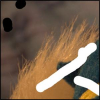CVPR
2010
IEEE
14 years 7 months ago
2010
IEEE
Building robust low and mid-level image representations, beyond edge primitives, is a long-standing goal in vision. Many existing feature detectors spatially pool edge information...
CVPR
2010
IEEE
14 years 7 months ago
2010
IEEE
We present an automatic and efficient method to extract spatio-temporal human volumes from video, which combines top-down model-based and bottom-up appearancebased approaches. Fr...
CVPR
2010
IEEE
14 years 7 months ago
2010
IEEE
Web photos in social media sharing websites such as Flickr are generally accompanied by rich but noisy textual descriptions (tags, captions, categories, etc.). In this paper, we p...
CVPR
2010
IEEE
14 years 7 months ago
2010
IEEE
Tracking-by-detection is increasingly popular in order to tackle the visual tracking problem. Existing adaptive methods suffer from the drifting problem, since they rely on selfup...
CVPR
2010
IEEE
14 years 7 months ago
2010
IEEE
Recent work in object localization has shown that the use of contextual cues can greatly improve accuracy over models that use appearance features alone. Although many of these mo...
CVPR
2010
IEEE
14 years 7 months ago
2010
IEEE
We present a method which enables rapid and dense reconstruction of scenes browsed by a single live camera. We take point-based real-time structure from motion (SFM) as our starti...
CVPR
2010
IEEE
14 years 7 months ago
2010
IEEE
Acquiring and representing the 4D space of rays in the world (the light field) is important for many computer vision and graphics applications. Yet, light field acquisition is c...
CVPR
2010
IEEE
14 years 7 months ago
2010
IEEE
Markov random fields with higher order potentials have emerged as a powerful model for several problems in computer vision. In order to facilitate their use, we propose a new rep...
CVPR
2010
IEEE
14 years 7 months ago
2010
IEEE
In this paper we considerably improve on a state-of-theart alpha matting approach by incorporating a new prior which is based on the image formation process. In particular, we mod...
CVPR
2010
IEEE
14 years 7 months ago
2010
IEEE
We propose a visual event recognition framework for consumer domain videos by leveraging a large amount of loosely labeled web videos (e.g., from YouTube). First, we propose a new...


